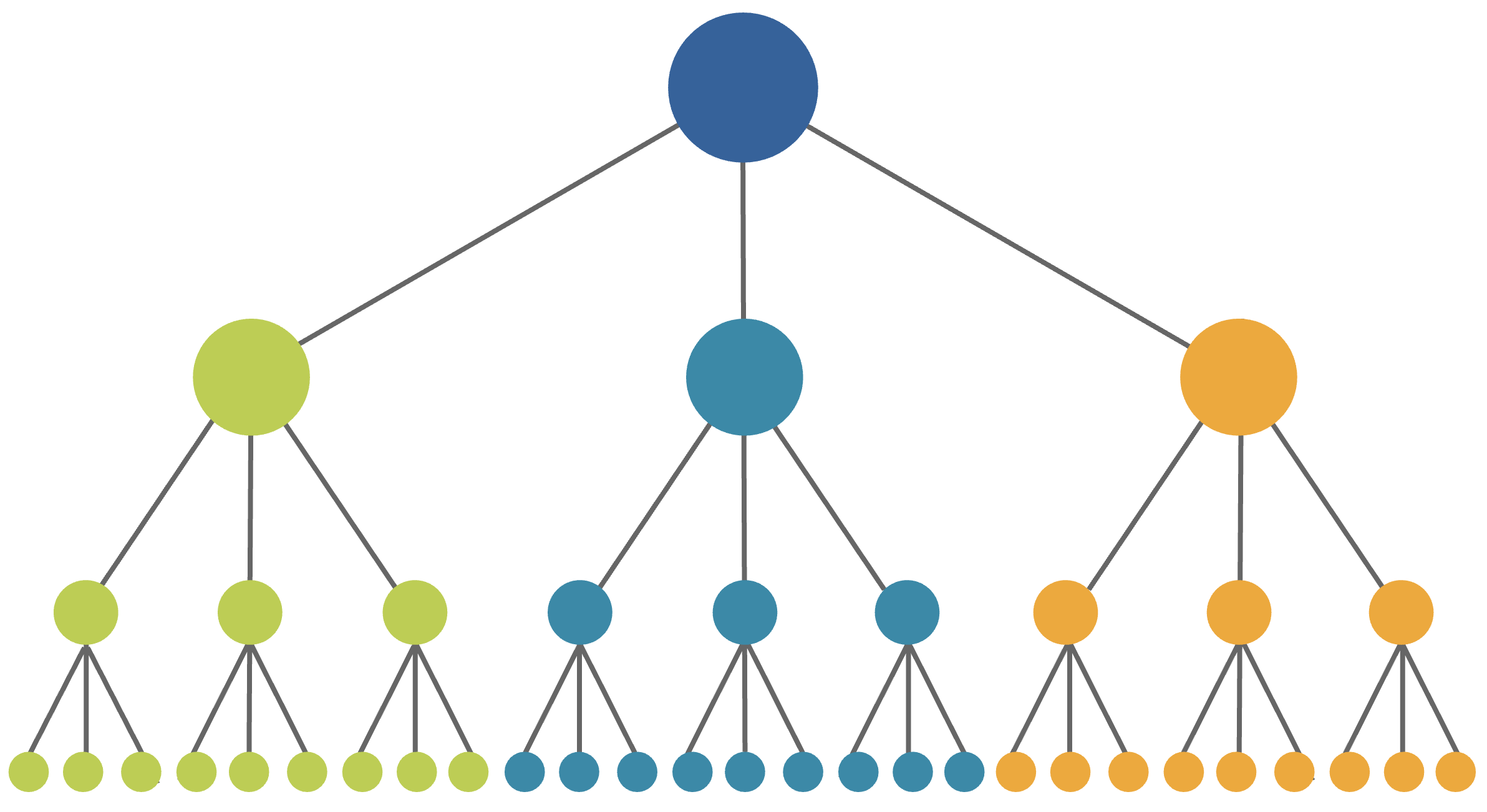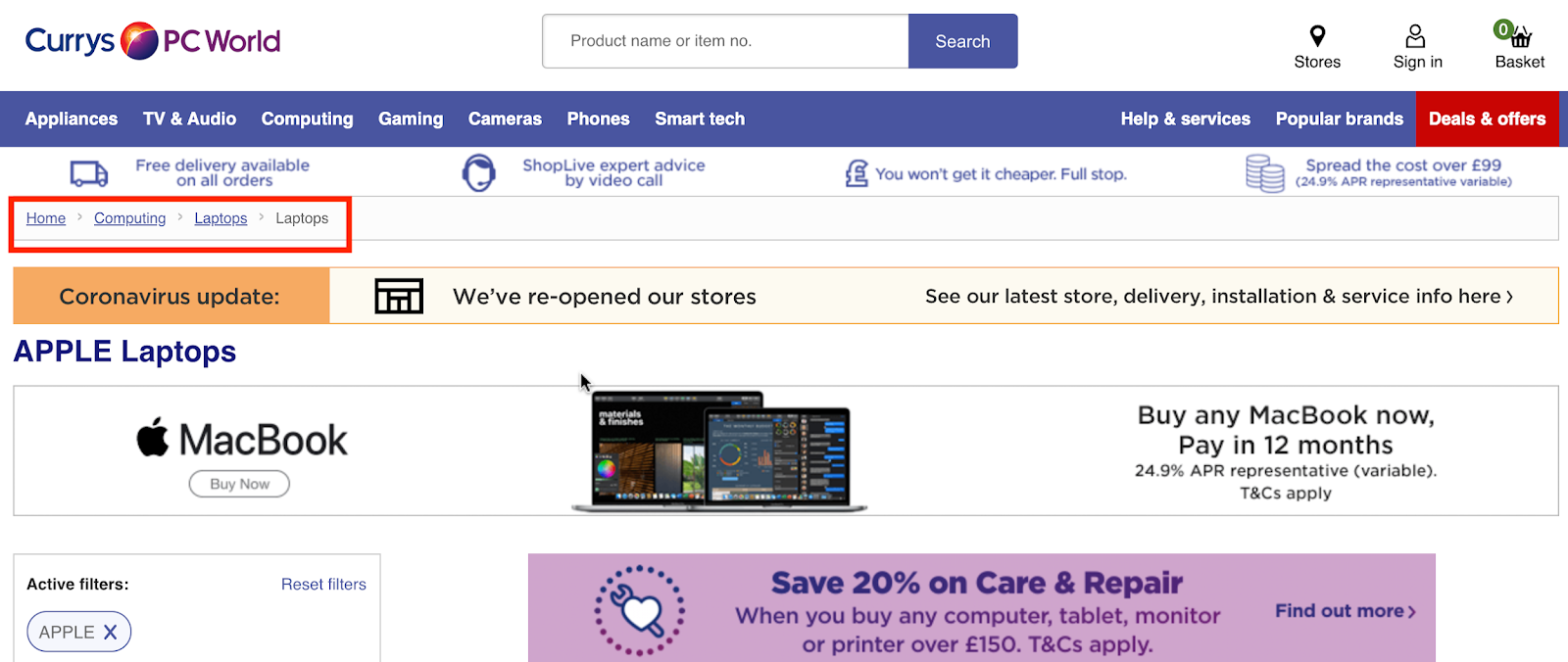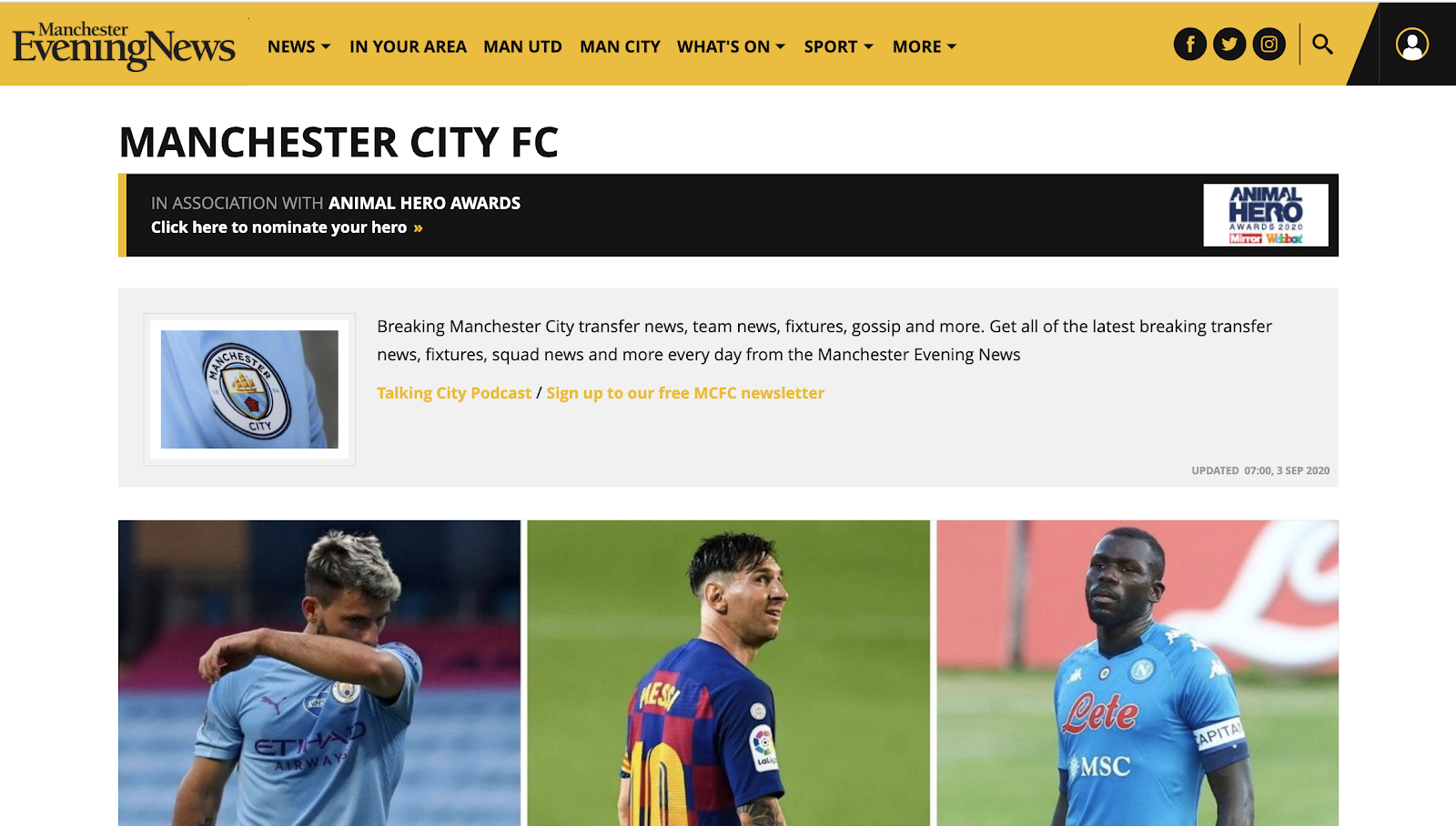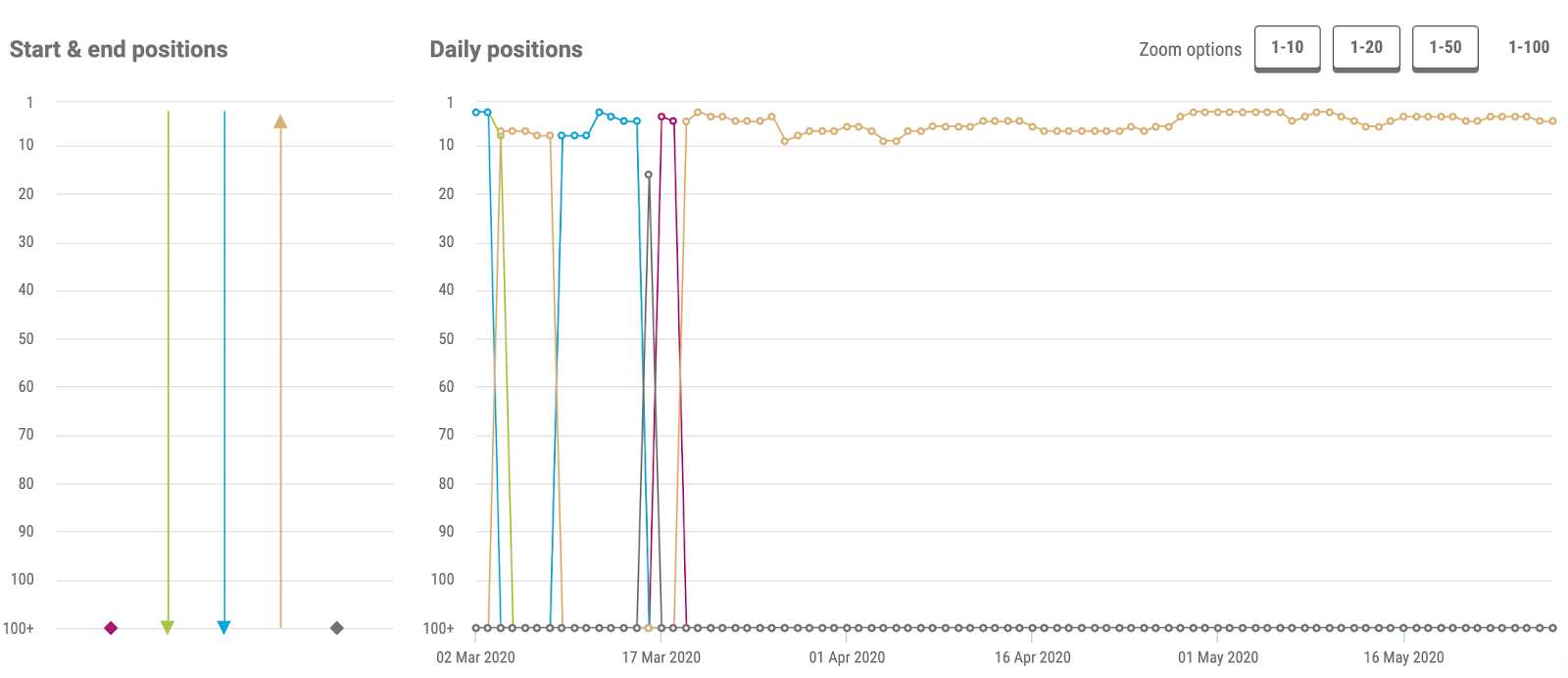What is internal linking for SEO and why do you need it?
21 Sep 2020|5 MIN READ
Internal linking is a key SEO tactic which is relevant for all types of websites, one which helps them to improve rankings for target keywords, and to highlight key content for search engines and users.
In this article, I’ll look at some of the benefits of internal linking, and how you can use internal links to improve search visibility and website performance.
What is internal linking?
Internal linking is placing links from one page on a website to another page on the same website.
These links may be for the purpose of navigation, such as the main navigation links you see on any eCommerce website, or links from one article to another on a blog or publisher’s site, and so on.
What are the key benefits of internal linking?
Internal linking can benefit a site by making it easier for users to navigate, as intelligent linking between pages helps to surface key information for them and provides relevant ideas for further reading.
It can also be a powerful SEO tactic, one which site owners have complete control over, and which can help you to send key signals to Google.
1. It helps the search engines to crawl your site
Google crawls your site and finds new pages on your site through links. For example, it finds a new page on your site by visiting it via a link from a page it already knows and analysing the content to decide where it should sit in the search index.
If no links exist to pages, Google can’t index it at all, or if the link structure is confused and complicated then it becomes harder for Google to crawl. In either case, it can negatively affect search rankings.
Essentially, an understandable and well organised linking structure will make it easier for Google to crawl, and therefore index, your site.
2. It helps you to point Google to important pages on your site
Internal linking allows you to send key signals to Google and tell it which pages on your site are most important, or more important than others.
For example, you may have several pages based around the same topic, Google will decide which one to rank for a specific keyword. This may not be the page you’d like your site to rank for, but internal linking can help you to indicate the page that is most important to you.
3. Internal linking can help you to achieve keyword goals
With internal links, you can use whatever anchor text you want to, and this can be a word or phrase you’re looking to rank for.
4. It can help to avoid cannibalisation
If you have pages around the same topic, using the same or similar keywords, then they could be competing against each other in Google’s rankings. This is cannibalisation.
If two or three pages are battling it out, then often the overall ranking can fall. Internal linking is the key tool to avoid such issues.
5. It benefits the user experience
A well structured site that is easy to index for the search engines is also likely to be easier for users to navigate.
This means that they find what they want more easily, helping retailers and other sites to optimise sales, drive leads or increase engagement.
6. It can help to keep users on your site longer
Links are useful for providing site visitors with more options that keep them on site. In eCommerce, this may be links to related products or key information which helps them or provides extra product inspiration.
For publishers, links are vital to give visitors ideas for further reading, and to encourage them to stick around longer.
Internal linking for SEO: best practices and examples
To make the most of internal linking, it’s important to think about it strategically. Through careful planning, you can avoid mistakes which can harm the ranking of key pages, and get maximum benefits from linking.
An effective internal link structure
A good navigation structure for a site will help Google to crawl your site and find new pages, it will improve UX, and can also help accessibility.
The key here is that the hierarchy of the site is clear, and that the site requires as few links as possible to get from the homepage or landing page to any given page on the site.
The best structure would look something like this, where the largest dot is the homepage, and lead to key category pages which help you to group topics and themes together.

In this way, on an electronics website for example, the computing category will lead to laptops, from where users can find subcategories such as Apple laptops.

The ideal internal link structure should reflect relationships between pages, and help to guide users through the site in a way that’s easy to understand.
The hub page strategy
Another step is to decide on your main hub pages. These may already be obvious – they could be your main product category pages or key product landing pages on eCommerce sites, or key subject areas for publishers.
These hub pages will often be the ones you want to rank for key target terms. For example, an electrical retailer will want to rank for terms such as ‘macbooks’ or ‘chromebooks’ as these are popular product search terms.
In most cases, when retailers are selling multiple macbooks for example, they’ll be looking to rank the category page for these terms, so they can showcase their range of matching products for searchers.
For a publisher, they may be pages dedicated to a particular topic. For example, a website covering football news will mention the names of Premier League teams in several articles every day.
Without internal linking, these individual article pages are likely to compete with each other, and the result of this conflict is often that search positions fluctuate with each new piece of content on the subject.
Without clear linking, Google simply doesn’t know which page the site wants to rank for that term, and so ranks different pages over time. This means the site isn’t as visible as it could be for a key topic.
The use of hub pages and internal linking can solve this issue. A hub page can rank consistently over time in a way that article pages would be unable to do.
Here’s an example from Manchester Evening News, and its Manchester City hub page. At the time of writing, this page is in fourth position on Google (after the club’s own sites and Wikipedia).

The secret is that every single article published about Manchester City is linking back to this hub page. This sends a clear signal to Google about the relative importance of the hub pages and article pages.

You’ll see this in practice on other publishers’ and retailer’s sites. Indeed, if you find a site with ranks well for a high traffic generic term, then there’s likely to be an effective internal linking strategy behind it.
For example, search for ‘Donald Trump’ and you’ll see The Guardian in the top four or five results for its hub page on the topic. Look at its articles and you’ll see a consistently applied internal linking strategy. This alone will help deliver a lot of extra traffic to the site.
Avoiding cannibalisation through internal linking
Keyword cannibalisation can be an issue when sites are using the same or similar keywords on different pages and pieces of content.
The result is that some of a site’s pages, which are using the same terms, end up competing with each other in the search rankings. This could, for example, be a product page competing with a landing or category page. This can happen when new product pages are added without being aware of the overall SEO strategy.
Data from Pi’s SEO Platform from a UK retailer, showing changing search positions for one target product term. There are seven pages here competing for the same term, taking turns to be the featured page on Google.
7 Pages Return | Daily Rank Positions | March 2020 – May 2020
 Image source: Pi’s SEO Platform
Image source: Pi’s SEO Platform
The pages indexed most prominently by Google change places more than 25 times in this three month period, and rarely feature on the first page.
For the retailer, this cannibalisation is hampering their chances at ranking in a more prominent position for a potentially valuable product-related search term.
The solution is to provide a clear signal to Google to show which page the site wants to appear in search results for the term.
The answer, of course, is internal linking. By linking to a chosen page (this may be a key landing page, a hub or product category page) from the competing page, as well as from elsewhere on site, the retailer can solve this issue.
Here’s a great example of this. At the start of the three month period shown here, five pages are ranking for the same term on different occasions.
However, internal links were pointed to the chosen landing page, and the result is a more consistent ranking for the last two months of the period shown, mainly in the first five positions.
Consistent Ranking | Daily Rank Positions | March 2020 – May 2020
 Image source: Pi’s SEO Platform
Image source: Pi’s SEO Platform
An improvement in ranking by just a couple of positions can make a huge difference in terms of traffic. Several studies estimate that the click through rate drops off steeply after the first two or three search positions on Google.
So for a retailer, solving a cannibalisation issue like this can make a big difference to revenues.
Use of anchor text
Anchor text in internal links can be hello in two ways. It can be used to help improve rankings for target keywords, and can also help the user experience, by providing useful context for people reading links.
Google is relatively coy about the effects of internal links on rankings. In my own experience, pages have ranked for target keywords after consistent internal linking with the same or similar anchor text (though it can be hard to separate the effect of the text from the links themselves, or from other factors like backlinks).
According to John Mueller, anchor text in internal links helps Google to understand the theme of the page being linked to:
“Essentially, internal linking helps us on the one hand to find pages, so that’s really important. It also helps us to get a bit of context about that specific page.”
Once you have identified your target page for a particular search term, you can use other mentions of that term around the site to link back to it. It’s important to consider the anchor text you use.
You may want the target page to rank for more than one keyword, so it’s good to think of them in order of importance, so your primary target keyword gets the majority of the anchor text, and so on.
It’s also good to vary the anchor text a little, even if you have just one target keyword. This is to avoid the risk that Google sees this as over-optimisation.
The role of content teams in an internal linking strategy
Effective internal linking is a long-term day to day strategy. Ideally it needs to be overseen by an Editor or perhaps a Head of Content with a knowledge of SEO so that keyword targets are understood and target pages (and hub pages) have been identified.
In this way, writers and editors are able to produce content knowing where links should be pointing, while being aware of the SEO goals that the site is working towards. For high traffic terms the effort can be rewarded by increased long-term traffic.
In summary: the importance of internal linking
Internal linking is one of the most valuable tactics an SEO can use. The great thing is that it’s something that is completely within a site’s control, and can achieve some impressive results.
It doesn’t have to cost a lot in terms of time or resources – once a clear internal linking strategy has been outlined, it just requires teams to be aware of the strategy and apply it as they go along.
Internal linking has some great side benefits too. In thinking about a link structure and a way of organising information and themes on a site that works for Google’s crawlers, it also makes the navigation more intuitive for users.
As the examples here show, a lack of internal linking, or a strategy which hasn’t been applied consistently can result in internal keyword cannibalisation, which essentially means pages are competing against each other for search positions.
Internal Linking | Pleasing Customers & Search Engines
Internal Links have always been a crucial part of building brand presence online, but are even more so right now, as Google E-A-T is ramped up in prioritisation.
Dixon Jones reveals that Google doesn’t pay attention to domain authority, or even page-level link authority anymore; instead it looks at the authority of sections of content and even just sentences!
Demo the Pi Platform
Never miss a post
Join our mailing list and have our SEO news delivered straight to your inbox.
Never miss a post
Join our mailing list and have our SEO news delivered straight to your inbox.




